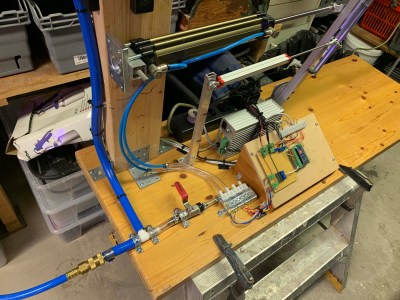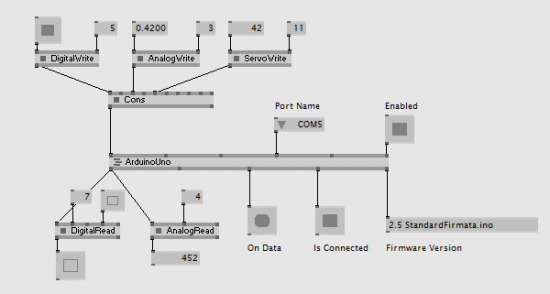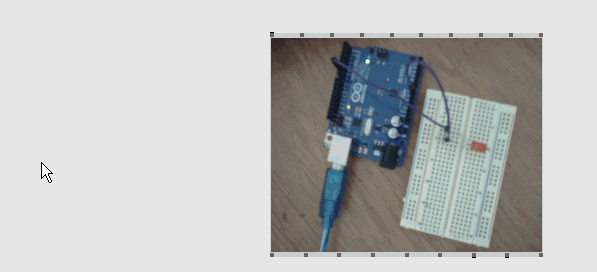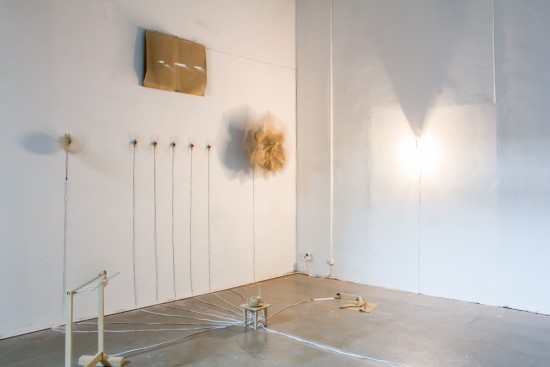27
Inspired by the creative genius of Martin Molin of Wintergatan fame, [iSax] set out to create a robotic MIDI-controlled trombone. It takes years for humans to develop the control and technique required to play the trombone well as the tone produced into the mouthpiece (embouchure) is a tricky combination of air pressure, lip tension, airflow, resonance in the mouth, and other sources of complex pressure.
 [iSax] gives a thorough walkthrough of the machine, which is powered by two separate sources of air, one for the position of the slide and the other for producing sound. A potentiometer provides feedback on the position of the slide and a servo controls the flow rate into the silicone resonance chamber. The chamber can be tuned via a stepper motor that applies pressure, slightly altering the chamber’s frequency and pressure. An Arduino with Firmata allows the device to controlled easily from any host computer. A detailed writeup in PDF form is on the Hackday.io project page.
[iSax] gives a thorough walkthrough of the machine, which is powered by two separate sources of air, one for the position of the slide and the other for producing sound. A potentiometer provides feedback on the position of the slide and a servo controls the flow rate into the silicone resonance chamber. The chamber can be tuned via a stepper motor that applies pressure, slightly altering the chamber’s frequency and pressure. An Arduino with Firmata allows the device to controlled easily from any host computer. A detailed writeup in PDF form is on the Hackday.io project page.
As you can imagine, simulating a human mouth is a daunting task and the number of variables meant that [iSax] ended up with something only vaguely trombone-like. While ultimately it didn’t turn out to be the astounding music machine that [iSax] hoped, it did end up being a fun feat of engineering we can appreciate and admire. Progress towards automatic brass instruments seems to be coming slowly as we saw similar results with this robotic trumpet. Maybe someday we’ll have robot brass sections, but not today.
Thanks [iSax] for sending this one in!













